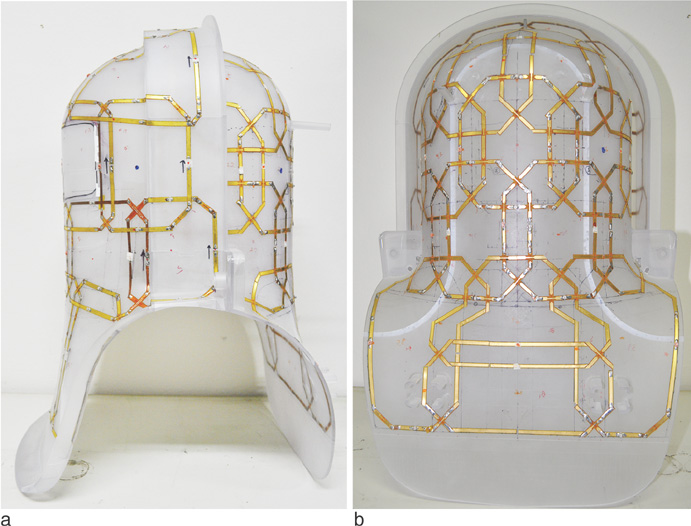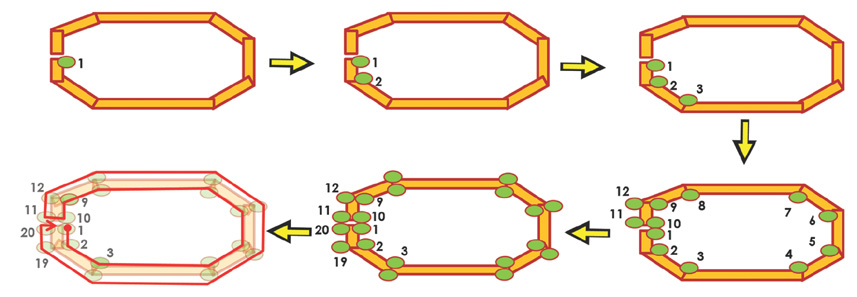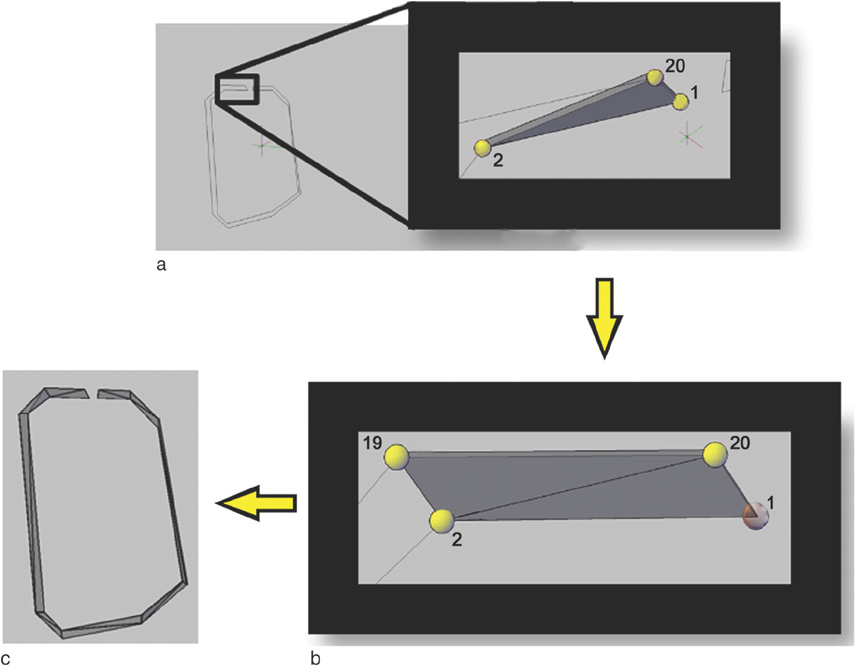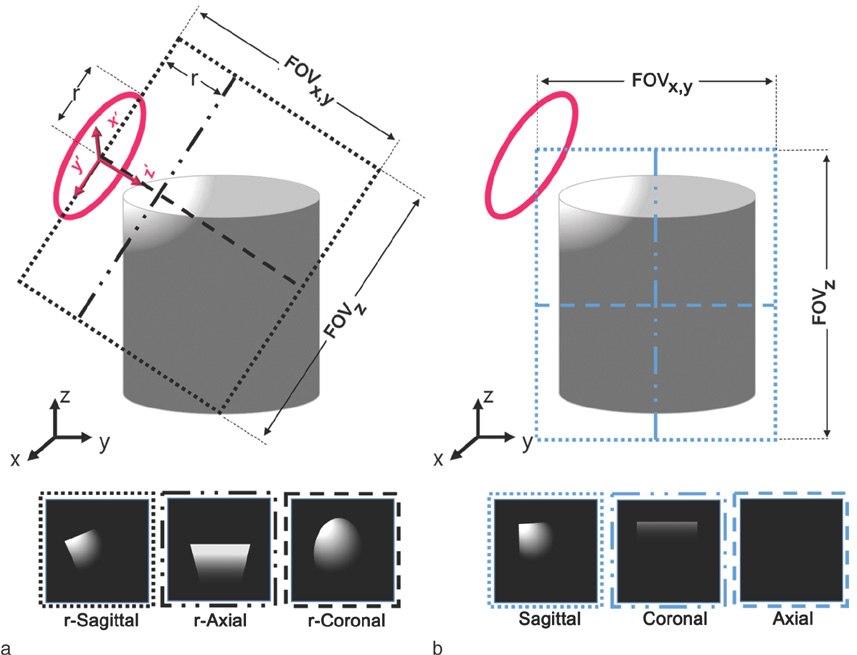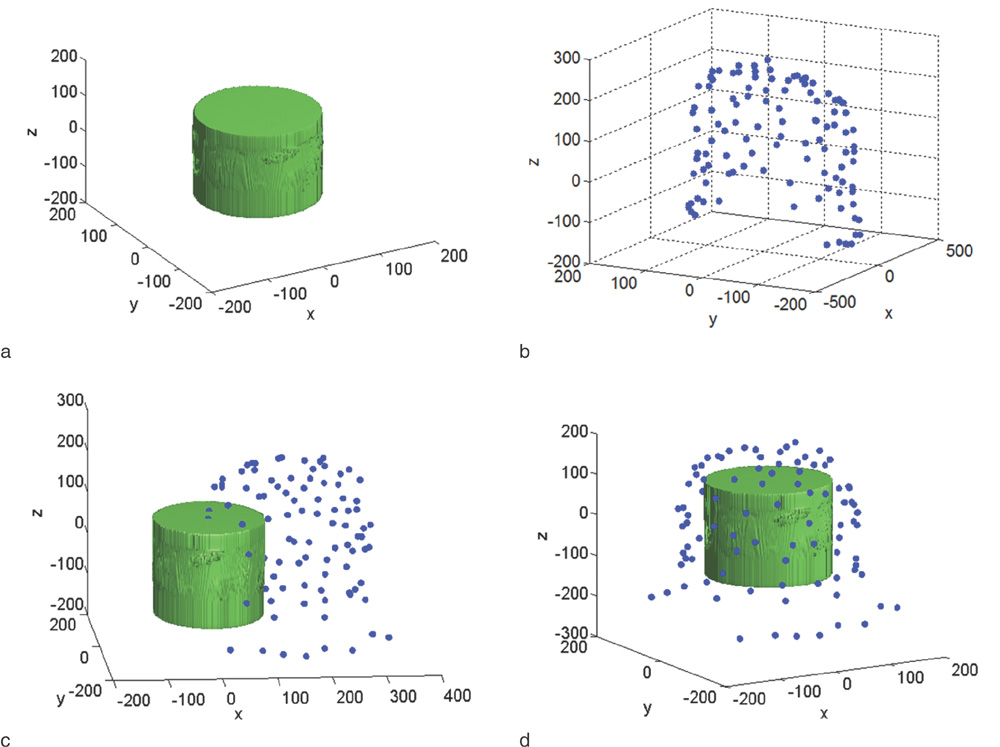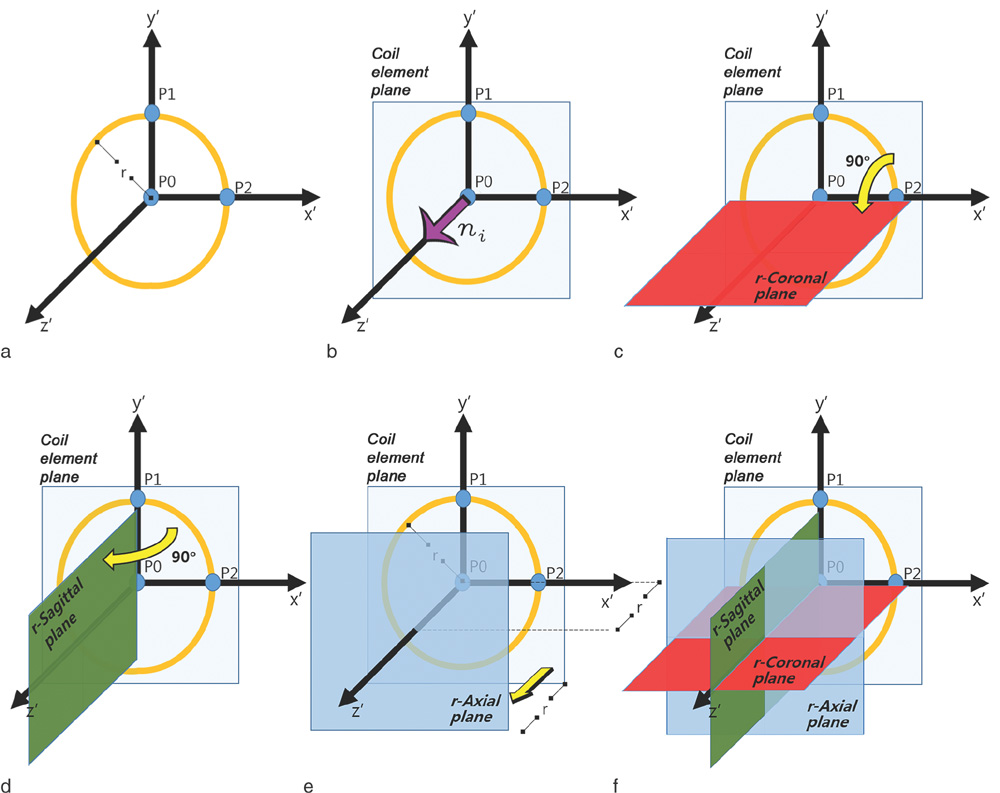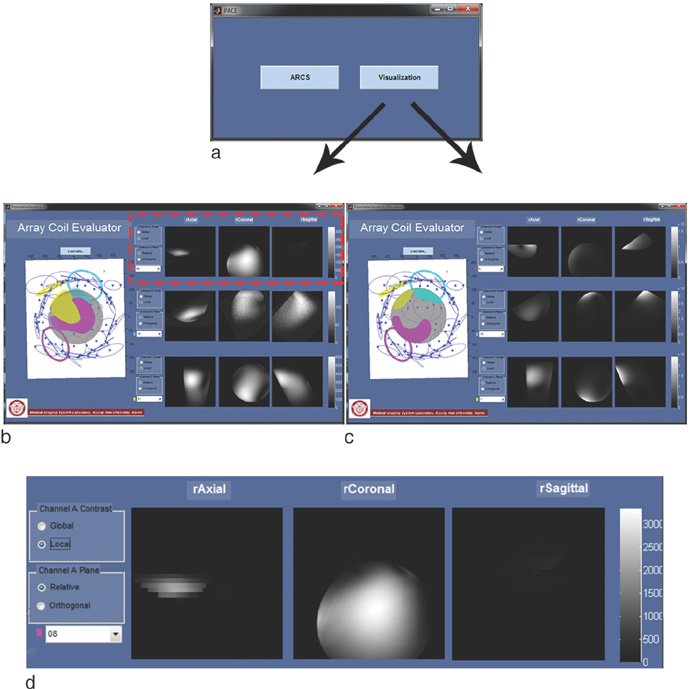J Korean Soc Magn Reson Med.
2014 Jun;18(2):107-119. 10.13104/jksmrm.2014.18.2.107.
A Tool Box to Evaluate the Phased Array Coil Performance Using Retrospective 3D Coil Modeling
- Affiliations
-
- 1Department of Biomedical Engineering, Kyung Hee University, Gyeonggi-do, Korea. sylee01@khu.ac.kr
- KMID: 2099887
- DOI: http://doi.org/10.13104/jksmrm.2014.18.2.107
Abstract
- PURPOSE
To efficiently evaluate phased array coil performance using a software tool box with which we can make visual comparison of the sensitivity of every coil element between the real experiment and EM simulation.
MATERIALS AND METHODS
We have developed a C++- and MATLAB-based software tool called Phased Array Coil Evaluator (PACE). PACE has the following functions: Building 3D models of the coil elements, importing the FDTD simulation results, and visualizing the coil sensitivity of each coil element on the ordinary Cartesian coordinate and the relative coil position coordinate. To build a 3D model of the phased array coil, we used an electromagnetic 3D tracker in a stylus form. After making the 3D model, we imported the 3D model into the FDTD electromagnetic field simulation tool.
RESULTS
An accurate comparison between the coil sensitivity simulation and real experiment on the tool box platform has been made through fine matching of the simulation and real experiment with aids of the 3D tracker. In the simulation and experiment, we used a 36-channel helmet-style phased array coil. At the 3D MRI data acquisition using the spoiled gradient echo sequence, we used the uniform cylindrical phantom that had the same geometry as the one in the FDTD simulation. In the tool box, we can conveniently choose the coil element of interest and we can compare the coil sensitivities element-by-element of the phased array coil.
CONCLUSION
We expect the tool box can be greatly used for developing phased array coils of new geometry or for periodic maintenance of phased array coils in a more accurate and consistent manner.
Keyword
Figure
Reference
-
1. Roemer PB, Edelstein WA, Hayes CE, Souza SP, Mueller OM. The NMR phased array. Magn Reson Med. 1990; 16:192–225.2. Lee RF, Giaquinto RO, Hardy CJ. Coupling and decoupling theory and its application to the MRI phased array. Magn Reson Med. 2002; 48:203–213.3. Keil B, Wald LL. Massively parallel MRI detector arrays. J Magn Reson. 2013; 229:75–89.4. Wong EY, Hillenbrand CM, Lewin JS, Duerk JL. Computer simulations for optimization of design parameters for intravascular imaging microcoil construction. Proc Intl Soc Mag Reson Med. 2003; 11:2386.5. Constantinides C, Angeli S, Gkagkarellis S, Cofer G. Intercomparison of performance of RF coil geometries for high field mouse cardiac MRI. Concepts Magn Reson Part A Bridg Educ Res. 2011; 38A:236–252.6. Hernandez D, Perez M, Lee SY. A bi-planar surface coil for parietal lobe imaging. Proc Intl Soc Mag Reson Med. 2013; 21:2793.7. Kim DE, Park YM, Perez M, Hernandez D, Lee JH, Lee SY. Retrospective 3D modeling of RF coils using a 3D tracker for EM simulation. Concepts Magn Reson Part B. 2013; 43:126–132.8. Wiggins GC, Triantafyllou C, Potthast A, Reykowski A, Nittka M, Wald LL. 32-channel 3 tesla receive-only phased-array head coil with soccer-ball element geometry. Magn Reson Med. 2006; 56:216–223.9. Lattanzi R, Grant AK, Polimeni JR, et al. Performance evaluation of a 32-element head array with respect to the ultimate intrinsic SNR. NMR Biomed. 2010; 23:142–151.10. Hoult DI. The principle of reciprocity in signal strength calculations-A mathematical guide. Concepts Magn Reson Part A. 2000; 12:173–187.11. Hartwig V, Tassano S, Mattii A, et al. Computational analysis of a radiofrequency knee coil for low-field MRI using FDTD. Applied Magn Reson. 2013; 44:389–400.12. Darrasse L, Kassab G. Quick measurement of NMR-coil sensitivity with a dual-loop probe. Review Scientific Instruments. 1993; 64:1841–1844.13. SEMCAD X MRI. Web site. http://www.speag.com/.14. Griswold MA, Jakob PM, Nittka M, Goldfarb JW, Haase A. Partially parallel imaging with localized sensitivities (PILS). Magn Reson Med. 2000; 44:602–609.15. Seiberlich N, Griswold M. Parallel imaging in angiography. Magnetic Resonance Angiography. Springer;2012. p. 188.
- Full Text Links
- Actions
-
Cited
- CITED
-
- Close
- Share
- Similar articles
-
- A Projection-based Intensity Correction Method of Phased-Array Coil Images
- Comparison of Pelvic Phased-Array versus Endorectal Coil Magnetic Resonance Imaging at 3 Tesla for Local Staging of Prostate Cancer
- MR Evaluation of Rectal Carcinoma: Pelvic Phased-Array Coil versus Endorectal-Pelvic Phased-Array Coil
- Reliability of MRI Using Endorectal Coil in Local Staging of Prostate Carcinoma
- Improvement of a 4-Channel Spiral-Loop RF Coil Array for TMJ MR Imaging at 7T

